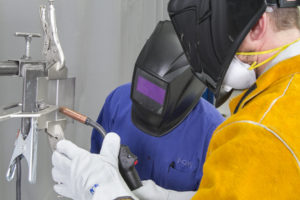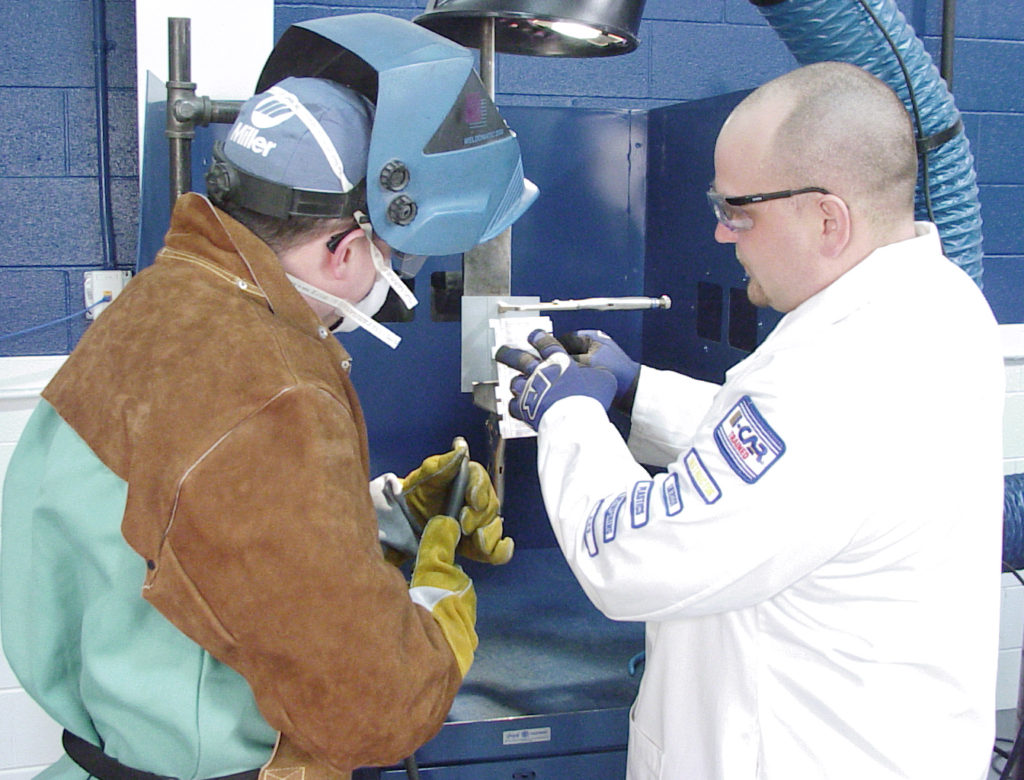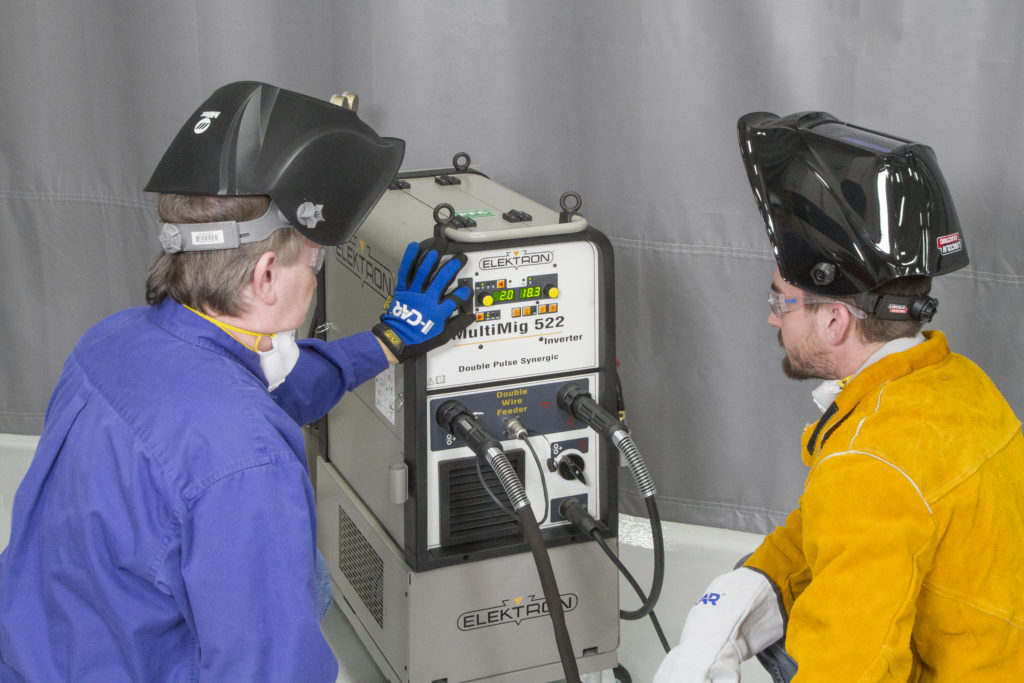
Preparing for I-CAR welding test? Make sure to avoid these common errors.
By onAnnouncements | Education | Repair Operations | Technology
I-CAR tests technicians seeking welding certification within their own collision repair facilities, on the very equipment they’ll be using to restore customer vehicles to pre-loss condition.
This is a “huge component” of the program, vetting not only the technician’s ability “but the equipment competency,” I-CAR director of business development Elise Quadrozzi said of the welding program. A highly skilled welder with bad infrastructure might still deliver an improper repair to a customer, after all.
“We believe the class should happen in the location where the technician’s going to do the work,” I-CAR business development director Nick Notte said.
This means it’s up to not only the technician but also the shop owner to prepare before signing up for any of the three I-CAR welding courses: “Steel MIG Welding” (WCS03) and “Steel Sectioning” (SPS05) courses must be passed by Dec. 31, and “Aluminum MIG Welding” (WCA03).
I-CAR offers a welding capability and readiness assessment prior to the testing, but why wait until then to catch potential deficiencies? Notte provided us with some examples of what can trip up a shop or technician; double-check yourself or your facility before you enroll in the class — or weld another customer’s vehicle.
“We see a mixed bag when we go out there,” Notte said.
Voltage
A major consideration is voltage, according to Notte.
“We see so many shops running 110,” he said. But running a welder on top of all the other electronics in a shop “just sucks that juice” and the voltage can drop to a point that results in “incomplete welds,” he said. “That’s absolute.”
“Ideally,” a shop has a 220-volt system, he said.
Vision
But “probably the biggest” issue is low-tech: “These guys can’t see,” Notte said.
“It’s amazing to us,” he continued. A technician will complete the theory, receive coaching “sometimes for a long time,” and yet “guys who should be great welders” still aren’t because of visual impairment.
One option techs might use is a welding helmet with interchangable faceplate glass able to be swapped out for a higher power lens — just like a higher prescription of glasses. Putting a welding helmet on a technician with poor eyesight can also be like “welding in the dark.”
I-CAR actually advises welders who haven’t had an eye examination for a while do so prior to the testing, Notte said.
Settings
I-CAR also catches technicians who fail to examine their welder’s settings prior to using it. It’ll test two technicians, and the second will just start welding away without checking to make sure the first tech’s settings were adequate for the job the second’s doing, according to Notte.
“Our instructors like to mess with them a little bit,” Notte said. The teachers will change the setting before turning the welder over to the second student, just to see if they’ll catch it.
“Most of them don’t,” he said.
If that’s the case during actual collision repair production, “God knows what they get.”
Aluminum: Clean up your act
A welder making the shift to aluminum from steel might get fouled up from a lack of tidiness.
Steel is more forgiving than aluminum of a less-than-immaculate weld surface. With aluminum welding, “the weld area has to be really clean,” according to Notte. (This isn’t to say you shouldn’t clean steel, merely that aluminum is finickier.)
Oxidization on the aluminum can cause a subsequent weld to fail, according to Notte. “You got some garbage in that weld, it’s not gonna hold,” he said.
It’s important a technician clean the area, front and back, Notte said.
More information:
I-CAR welding readiness assessment webpage
Featured images: I-CAR tests technicians seeking welding certification within their own collision repair facilities, on the very equipment they’ll be using to restore customer vehicles to pre-loss condition. (Provided by I-CAR)


